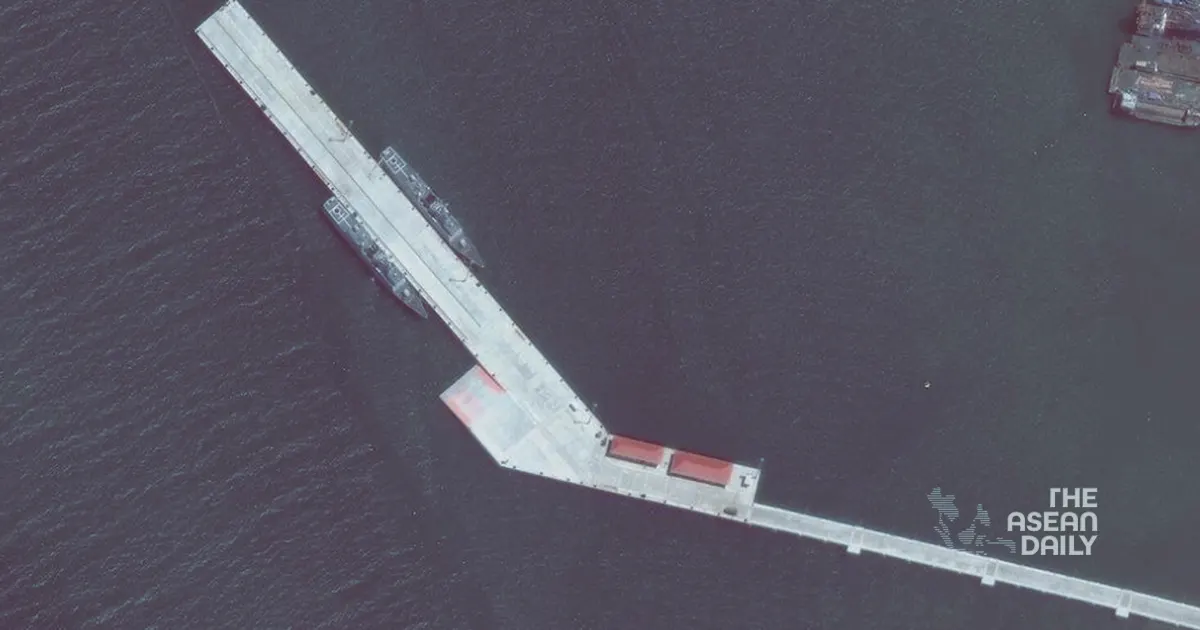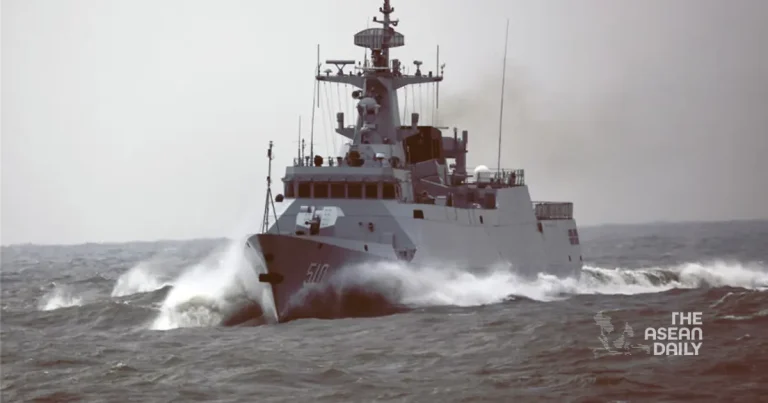25-9-2024 (PHNOM PENH) China’s recent commitment to gift two warships to Cambodia, coupled with its ongoing involvement in upgrading the Ream Naval Base, has ignited fresh discussions about Beijing’s strategic intentions in Southeast Asia.
The Chinese-funded renovation of the Ream Naval Base, located in Cambodia’s southwestern Sihanoukville province along the Gulf of Thailand, is nearing completion. This development, combined with the promised donation of two Type 056 corvettes to the Cambodian navy, has raised eyebrows among analysts who see these gestures as part of a broader Chinese strategy to expand its influence in the region.
Dr Abdul Rahman Yaacob, a research fellow at the Lowy Institute’s Southeast Asia Programme, suggests that these moves may be part of a quid pro quo arrangement. “The provision of military assistance to Cambodia is a means to an end for China, aimed at influencing Phnom Penh to serve Beijing’s long-term interests,” he told this reporter.

The Type 056 corvettes, designed for littoral combat, are versatile vessels capable of conducting patrols, escorts, search-and-rescue operations, and surveillance. They are also equipped for electronic and anti-surface warfare, with anti-aircraft and anti-submarine capabilities. The Cambodian defence ministry has stated that these ships could be delivered as early as next year, ostensibly to bolster the country’s capacity to maintain regional peace and security.
However, some experts argue that the enhanced facilities at Ream Naval Base and the gifted warships far exceed Cambodia’s current military capabilities and needs. Professor Zachary Abuza from the National War College in Washington DC points out, “Cambodia would not possess the expertise to operate complex warships or advanced radar and communications systems.”

This disparity has led to speculation about China’s potential “privileged access” to the base, despite denials from both Beijing and Phnom Penh regarding any formal agreement granting exclusive use to the Chinese military.
The developments at Ream have been linked by some Western observers to China’s purported “string of pearls” strategy, a concept describing Beijing’s efforts to establish a network of military and commercial outposts along key maritime routes. However, analysts interviewed for this article question the direct connection between the Ream base and China’s broader strategic aims in the South China Sea or potential Taiwan contingencies.
Dr Chang Ching, a research fellow at the Taipei-based Society for Strategic Studies, dismisses claims that China would use Ream as part of its Taiwan strategy as “ludicrous”, citing the base’s distance from Taiwan and China’s superior options closer to home.
The growing military ties between China and Cambodia have raised concerns among some of Cambodia’s neighbours, particularly Vietnam and Thailand. Hanoi is reportedly wary of China using Cambodia as a strategic lever to exert pressure on its southern border, especially given ongoing disputes in the South China Sea. Meanwhile, Thailand has begun reassessing its relationship with China in light of these developments.
However, not all analysts believe that increased Chinese military activity resulting from its use of the Ream naval base will necessarily heighten regional tensions. Dr Chang argues that as an ASEAN member, Cambodia is unlikely to allow itself to be used as an overseas military base in a way that would make it an “accomplice to an aggressor”.
As the United States and China continue their tussle for influence in Southeast Asia, Cambodia’s strengthening defence ties with Beijing are seen partly as a response to a decline in its relationship with Washington. The US imposed an arms embargo on Cambodia in 2021, citing concerns about growing Chinese military influence in the country.
The ongoing developments at Ream Naval Base and the gifting of warships to Cambodia underscore the complex dynamics at play in Southeast Asia as major powers vie for influence. As Dr Abdul Rahman notes, “I anticipate that the international manoeuvring among superpowers and developing states will continue, particularly in the Southeast Asian region, where the dynamics are complex and deeply intertwined.”




